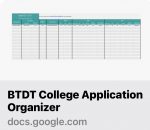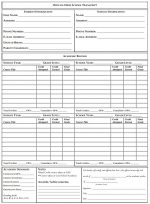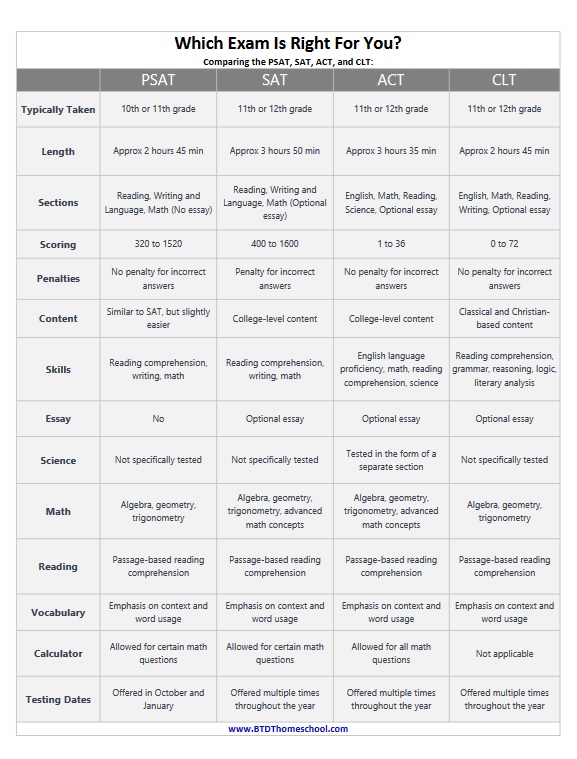066. Transitioning To College: 7 Tips When Classes Start
066. Transitioning To College: 7 Tips When Classes Start

In today’s episode, we will explore the journey of homeschool students as they navigate the transition from the comforts of home to the bustling halls of college. We are going to dive into the unique experiences, challenges, and triumphs faced by homeschooled students as they make the leap into higher education.
Episode 066:
TWO WAYS TO LISTEN TO THIS EPISODE:
1. Click PLAY Button Above ^^ to listen here.
2. OR Listen on your favorite podcast platform:
Brand New to Homeschooling?
GETTING START PAGE >>
Kindergarten Page >>
High School Series >>
Download this week’s FREEBIE
Show Notes
Whether your student is beginning on a new adventure out of town or state, or staying at home while attending a local university, transitioning to college marks a pivotal moment in their life. And it’s a transition just brimming with excitement, nerves, and a profound sense of independence. For many, it’s the first taste of true autonomy, a leap into the unknown where dorm rooms replace childhood bedrooms and newfound freedom dances with homesickness.
As parents, we share in this emotional rollercoaster. We feel the thrill of watching our children embrace their newfound freedom, but also that bittersweet pang of seeing them leave the nest. This journey is as much about our own growth as it is theirs. We’ve spent years guiding, teaching, and nurturing them, and now we get to see them step into the world with confidence. Rate My Professors has been an invaluable resource!
This isn’t just an academic milestone; it’s a beautiful, sometimes challenging, adventure into adulthood. Let’s celebrate this moment together, cherishing every new experience and triumph as they shape the remarkable adults our children are becoming. This is what we’ve been training for! From forging their own academic paths to adjusting to traditional classroom settings, join us on this episode as we share insights, tips, and heartfelt advice to help make the transition from homeschooling to college life as smooth and successful as possible.
I definitely felt the impact of it all. I’ve been homeschooling from the very beginning so this was a huge accomplishment for both of us. My daughter was excited to spread her wings and as a single mom, so many people told me from the very beginning that I couldn’t do this and boy did it feel empowering to prove them wrong. She was fully cooked by the time she was a junior. She was ready to move out and that last year was a bit brutal. She was ready to fly, but she still had a year left so in a way it was a relief for both of us when she graduated. I know everybody’s experience is not going to be this, but we both needed a breather from each other. And our relationship that was always very close was a little strained that last year. Glad to say that it is fully recovered and we truly enjoy each other‘s company and we’re both so excited when we get to spend time together. Soiling The Nest
In today’s episode, we will explore the journey of homeschool students as they navigate the transition from the comforts of home to the bustling halls of college. We are going to dive into the unique experiences, challenges, and triumphs faced by homeschooled students as they make the leap into higher education.
The Freshman Survival Guide is the best guide to navigating the first year of college that speaks to college students in their own language and offers practical tools that readers need to keep from drinking, sleeping, or skipping their way out of college:

Also, if you want to learn more about homeschool high school and college prep, we have an entire High School Series that outlines everything from creating your 4-year plan to college entrance exams. We also have tons of free resources that will help including Free Editable Transcript Templates:

Moving from homeschooling to college is a big step, but with a little preparation and support, it can be an exciting and rewarding journey. So we’re going to start with 7 key tips to help with this transition.
1. Familiarize Them with College Expectations
Help your child understand what to expect in terms of workload, deadlines, and class structure. This might involve discussing typical college schedules, grading systems, and academic expectations.
This is where I really felt like we had a competitive edge because of homeschooling. Because our kids had taken a variety of classes over the years from all kinds of different teachers, they were much better equipped for the different class formats and structures than some of their traditional schooled counterparts. For a lot of their friends, the only experience with an online class was during covid, and we all know that wasn’t ideal.
We’d definitely recommend having plenty of communication with your child about their schedules and timelines. Even though they are young adults and may already be responsible for managing their communications and assignments, let them know you are there to help if they need it. It is up to them what information they want to share with you. Many college computer systems have a separate portal just for parents that your student can choose to give you access to, which often includes financial information or grades.
2. Develop Study and Time Management Skills
College often requires more independent studying and time management compared to homeschooling. Work together to create a study schedule and explore time management techniques that work best for them. Remember as always, that the system that works best for you, may not be the one for them. It’s really important that students learn to forge their own path and methods and find what works best for them.

This episode was the last in our High School Series, which is 12 episodes long and chock full of info about homeschooling in high school. This particular episode has a lot of great advice on how to teach those essential executive function skills while still in high school. And it has several great book recommendations, too!
3. Encourage Socialization
Socializing in college can be intimidating for everyone. Encourage your child to participate in clubs, organizations, and social events to meet new people and build a support network. This is the hardest part of college especially if you are headed off solo and don’t have a network of friends going already. Most colleges do a freshman orientation week for new entering freshmen to familiarize them with the campus and social activities. Make sure your child goes. It can really help with the anxiety when classes start if they’ve already connected with someone.
This is where I did some legwork to help. And it was a great way to also learn about their campus and town and know what kinds of resources and things were there, so I could offer that info up when needed. I made a book (and not my idea) with things like an area map, shopping/restaurants, school resources- bus, study, counseling, support groups, clubs and organizations they might be interested in and there are so many! I often encourage my kids to join all the things and then pare back to the things they really like later. My book also had medical info, insurance card, legal docs, which we will talk about later.
4. Utilize College Resources
Familiarize yourselves with the resources available on campus, such as tutoring services, academic advisors, and counseling centers. Knowing where to turn for help can ease the transition and support academic success. Colleges have so many cool resources! Even our local community college has a math lab and writing lab and language lab where you can get tutoring. And bonus, these things are typically free to access, too.
Having a practice space for musicians or other performing arts students is typically offered on campus, too. And you don’t necessarily have to be part of the department. And after graduation, your college probably has an internship program and job placement program of some sort. Tapping into your alumni group is smart- even finding out if your local area has one even if your kids went far away.

We have a whole Texas Ram Colorado State Page and met up before school started for bowling. I also recommend joining the parent group for your university. Sometimes they can be a crapshoot like any online forum is but I’ve gotten lots of great info from ours- like local weather, good places to eat or service recommendations from locals, etc. At my daughter’s school there is also a local mom that will help with things like airport pick up or birthday surprises. It makes me want to join our local college forum and help other people’s kids out!
5. Practice Self-Advocacy
This is probably something you’ve been doing all along, but definitely before they head off to college. Teach your child how to advocate for themselves. This is especially important in a college setting. This includes asking questions, speaking up to ask for clarification from their professor when they don’t understand something, and advocating for their needs. This might be for things like an accommodation for a learning difference. Empowering them to become a self-advocate is crucial for their success and growth during their college years but it can be really hard to master!
Encourage them to actively engage with professors, advisors, and campus resources to address academic challenges, seek support, and pursue opportunities aligned with their goals. My kids really appreciate the relationships they’ve built with some of their professors and advisors. Encourage them to communicate with professors from the get go- mine love sending an intro message at the beginning of the semester, and if they enjoy the class, letting the professor know that later. My son’s favorite professor led to a second major. Also, always go to non-mandatory office hour offers. My kids were often the only kids to do this!

I’ve always encouraged my children, beginning in the local community college taking dual enrollment classes, to reach out to their professors and go to their after hour meet ups. My kids are always shocked that they are the only ones there. But I guarantee you, that professor remembers them. Especially when their grade is on the cusp. It always gets bumped up! But it’s not just about the grade—my children genuinely enjoy chatting and getting to know their professors. It’s such a homeschooler thing to do! I mean really, that’s one of the best things about homeschooling is that our kids learn to relate to people of all walks of life. Having our kids out in the real world and engaging in real life experiences with our community has taught them to encourage and not shy away from these kinds of exchanges.

And it’s important to know that self advocacy fosters a sense of confidence and resilience, reminding them that advocating for themselves is not a sign of weakness but a demonstration of strength and self-awareness. This is important because you’re preparing them not only for academic success but also for lifelong independence and self-empowerment.
Join our Facebook FREEBIES Group for free Instant Download resources from all over the world:

6. Stay Connected
Be sure to keep lines of communication open between you and your child, especially during the first semester of college. Regular check-ins can provide opportunities to address any challenges or concerns that arise. I always love to send care packages. or since my daughter is just an hour away, sometimes I meet her half way for lunch and bring her a little something.
Some parents find it really important to lay out that expectation beforehand. I talked with my kids about how often I would communicate with them and my minimum expectations for them- I knew I wanted to hear from them at least once a week, even if it was just a casual funny meme, or proof of life! I promised I would not bother them incessantly!
This one’s a tough one for me because my daughter loves to fall off the radar. She runs hot and cold. Sometimes I hear from her every single day for a month and then nothing for a month. I probably should’ve established rules early on, so learn from my mistakes!

We also use Life 360 for the whole family. While they sometimes were irritated with it, I explained to them that it saved them a ton of communication from me and I made it a point not to question their whereabouts. Honestly, my youngest uses it to track me more than I use it. It does give me peace of mind when they are on long drives home from school, and allows me to check if they are in a class before I call them, etc.
Ultimately, you have to know your own child and comfort zone. Everyone has a different parenting style and needs to do what’s right for them and their relationship with this new adult. What’s the old saying? “Parenting young children is physically exhausting” and “Parenting older children is mentally exhausting.”
7. Emphasize Independence and Responsibility
Encourage your child to take ownership of their education and responsibilities. College offers a greater degree of freedom and autonomy, so it’s important for them to develop skills in decision-making, problem-solving, and accountability. I would suggest encouraging them to actively engage with their coursework, to seek out resources and support when needed, and to take initiative in pursuing their passions and interests. It’s ok to help them with this, but what you really want to do is give them the skills to help themselves figure things out.

While we want them to be super independent, there also may be some things we want to stay on top of and that they may appreciate us still being in charge of as they turn 18. As a child heads off to college, establishing power of attorney and other essential legal documents may be important in ensuring their well-being and autonomy, especially in unforeseen circumstances. Power of attorney grants a designated individual the authority to make legal and financial decisions on behalf of the student, should they become incapacitated or unable to act. Additionally, documents such as a healthcare proxy and living will outline their medical preferences and designate someone to make medical decisions on their behalf.
As they become adults, they will now be the ones signing things like HIPAA authorization form allows healthcare providers to share medical information with specified individuals. So if you or they want or need you to remain involved in things like this, these legal safeguards not only provide peace of mind for both them and you, but it also teaches them to navigate complex legal and medical situations with clarity and support, even if they are far from home.
Get 20% off by clicking: Mama Bear Legal

Hopefully, we’ve given you some helpful ideas for transitioning to college. By focusing on these key areas, you can support your teenager in making a successful transition and thriving as independent thinkers and lifelong learners. Homeschooled kids bring a unique set of skills and perspectives to the college experience, enriched by their independent learning and diverse backgrounds. While challenges may come up, your child has the resilience and adaptability to do great. As they start this new chapter, let’s celebrate their achievements, support their growth, and appreciate the unique contributions they bring to higher education.
This Week’s Free Resource






























